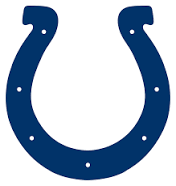New York Jets
- Paul Grange

- Sep 23
- 2 min read

The New York Jets were not always Jets. Founded in 1960 as the Titans of New York in the old AFL, they struggled with identity and finances in their early years. When new ownership took over in 1963, they wanted a clean break — and chose the name “Jets.” Why? Because their new home was Shea Stadium, right next to LaGuardia Airport, where the roar of airplanes overhead became part of every game. The 1960s were the dawn of the jet age, when air travel was becoming faster, cheaper, and more glamorous. Naming the team “Jets” tied them to that sleek, futuristic image and to the engines roaring just above the stands. It did not hurt either that the other two major teams in NY – the Mets and the Nets rhymed nicely.
LaGuardia itself was a marvel of the 20th century. Opened in 1939, it was one of the most modern airports in the world at the time, helping cement New York’s role as a hub of global aviation. Just across the city, JFK Airport (originally Idlewild) became the gateway to the world, home to innovations in jetliners, terminals, and international travel. Pan Am and TWA made New York their base, turning it into the beating heart of the jet-set era. Even Newark, across the river in New Jersey, became one of the nation’s busiest airports. Few places symbolised modernity and speed more than New York’s skies.
The Jets carved out their own place in New York sports. The city already had the Giants, who traced their roots back to 1925 in the NFL. The Giants were the established, traditional powerhouse playing in Yankee Stadium, a team with deep history. The Jets were the upstarts — an AFL team, brash and modern, a little rough around the edges. Their greatest moment came early: Super Bowl III in 1969, when quarterback Joe Namath famously guaranteed victory over the heavily favoured Baltimore Colts and delivered it. That win legitimised the AFL, paved the way for the merger with the NFL, and remains one of the most iconic upsets in sports history.
Since then, the Jets have struggled to match that high. They’ve made playoff runs, produced stars like Curtis Martin, Don Maynard, and Darrelle Revis, and reached four AFC Championship Games, but they’re still chasing a second Super Bowl. Yet their fans, often defined by loyalty and frustration in equal measure, remain among the most passionate in the league. For them, being a Jets fan isn’t about glory — it’s about belonging to a community of underdogs in a city that usually expects only the best.
The Jets are different from the Giants not just in league lineage but in attitude. The Giants are establishment: old money, steady, serious. The Jets are insurgent: new money, loud, defiant. They’ve been mocked, cursed, and doubted, but they still fight. And in a city that thrives on hustle, competition, and reinvention, that makes them very New York indeed.







Comments